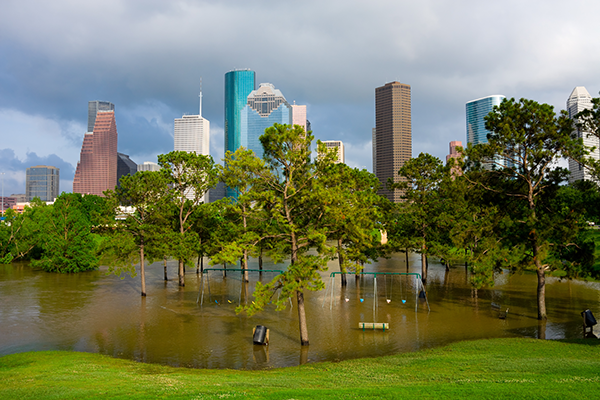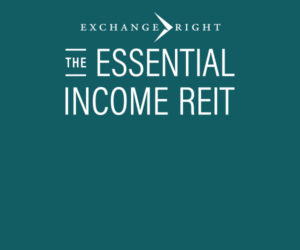How Are Markets Rebounding from Harvey?
September 22, 2017 | Beth Glavosek | Blue Vault

As the city of Houston continues its recovery after Hurricane Harvey and its catastrophic flooding, analysts are starting to size up the long-term implications on the real estate market, real estate investments, and the overall economy.
Here are a couple of areas to watch:
CMBS Offerings and Office Sector
Last month, Bloomberg Markets reported some key findings on the hurricane’s impact on commercial mortgage-backed securities (CMBS). Morgan Stanley estimates that Houston-area offices, malls, and hotels support nearly $9 billion of the loans packaged since the financial crisis. Flood damage could jeopardize the payoff of about $1.13 billion in loans maturing in the next 12 months, according to the Bloomberg article and analysts at Morningstar Credit Ratings.
In the immediate term, there are elevated expenses for office owners and landlords related to cleanup and any damage not covered by insurance, according to Bloomberg Intelligence analyst Jeffrey Langbaum. There shouldn’t, however, be any near-term impact on revenue for buildings if they are leased but, “if companies end up moving, or go under, there will be longer-term disruption,” he says. Large office buildings could struggle if they aren’t able to show or renovate their spaces in preparation for lease expirations.
REITs
REITs with significant exposure to Houston could see some effects if there are near-term tenant and lease risks related to the above issues. However, according to Blue Vault’s research, only one nontraded REIT has suffered a casualty loss due to a hurricane, and that was a relatively minor insurance claim of just a few million dollars for a large portfolio. Because most nontraded REITs have portfolios that span the nation and even the world, Blue Vault believes that the diversification available in these portfolios offers great protection against localized disasters.
Energy and Fuels
According to IHS Markit, an information and analytics company whose data includes the energy industry, 15 of the 20 affected refineries in the Gulf Coast energy complex were at or near normal operating rates as of September 19. While around 1.0 million b/d of distillation capacity (5% of US total) is estimated to still be offline, steady progress appears to have been made to be operating normally in the near future. IHS Markit has observed that refined product markets have calmed considerably and that the NYMEX RBOB spot price was essentially back to its pre-Harvey level.












